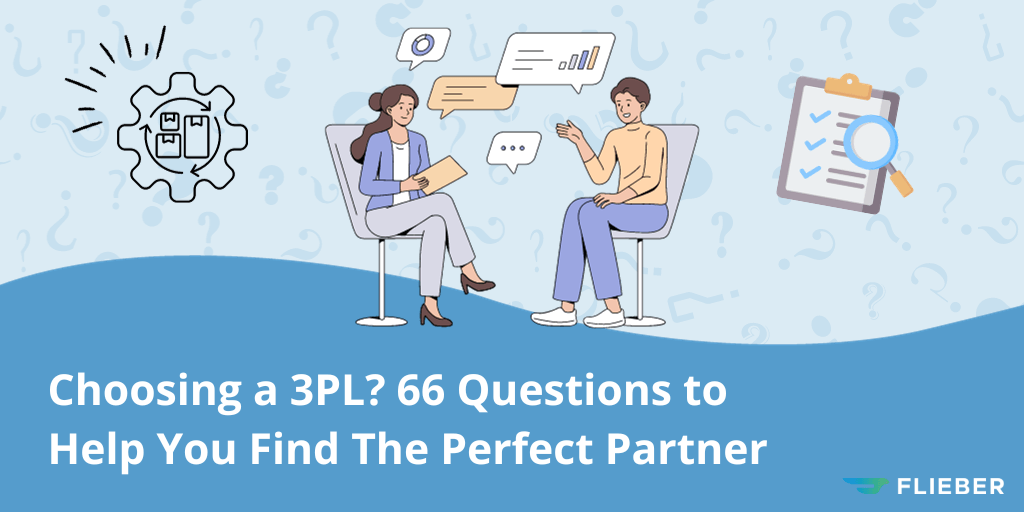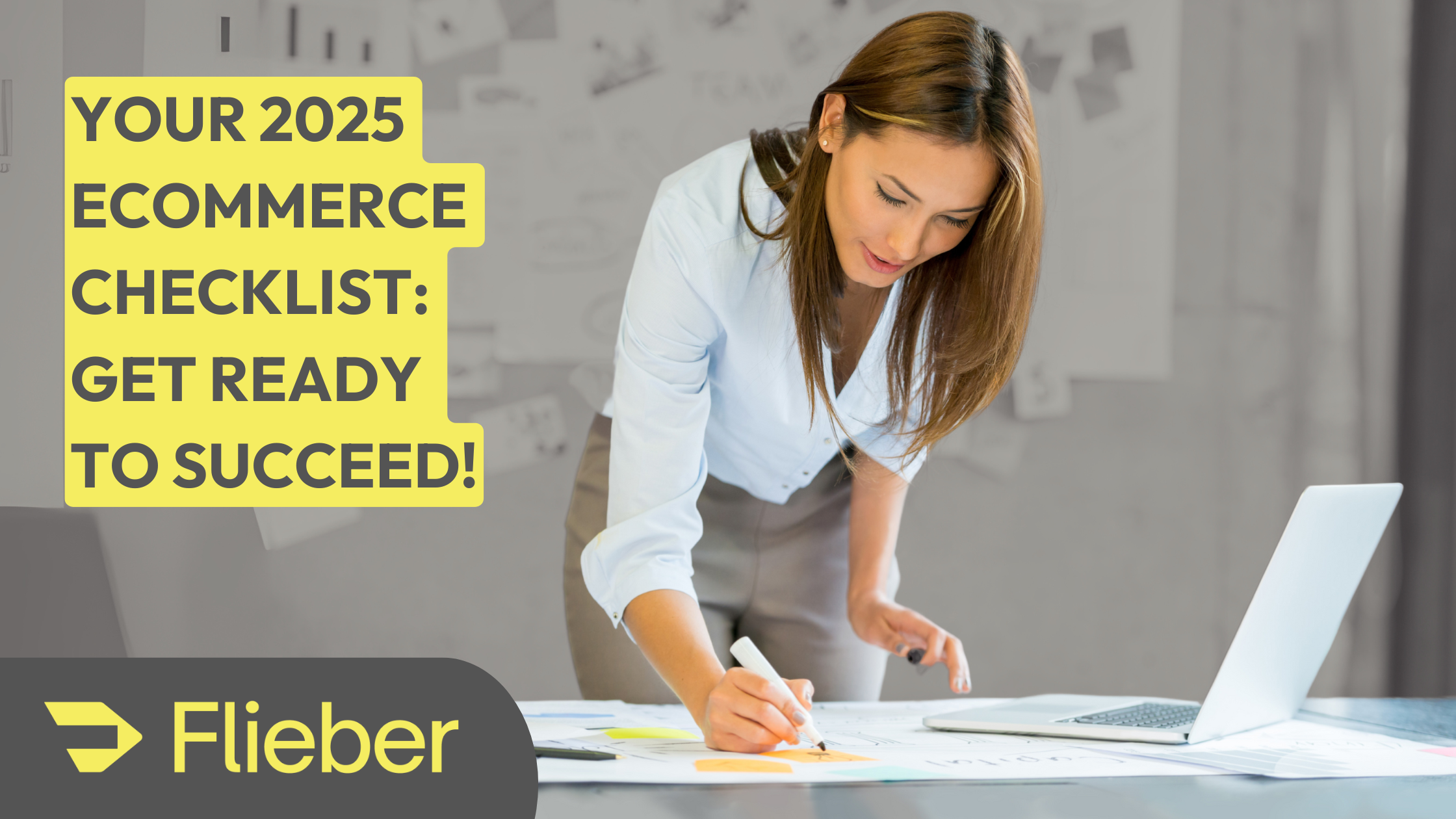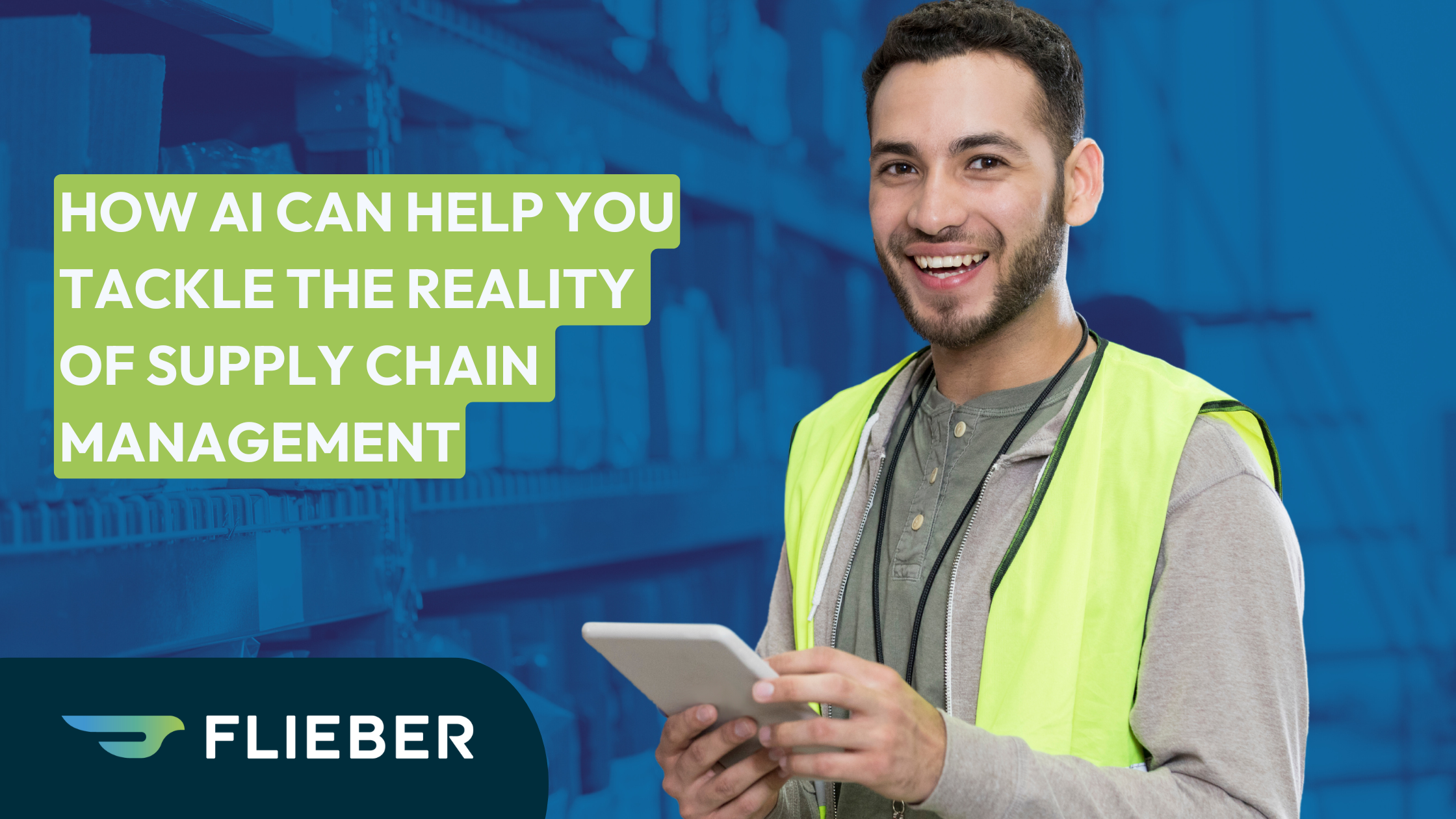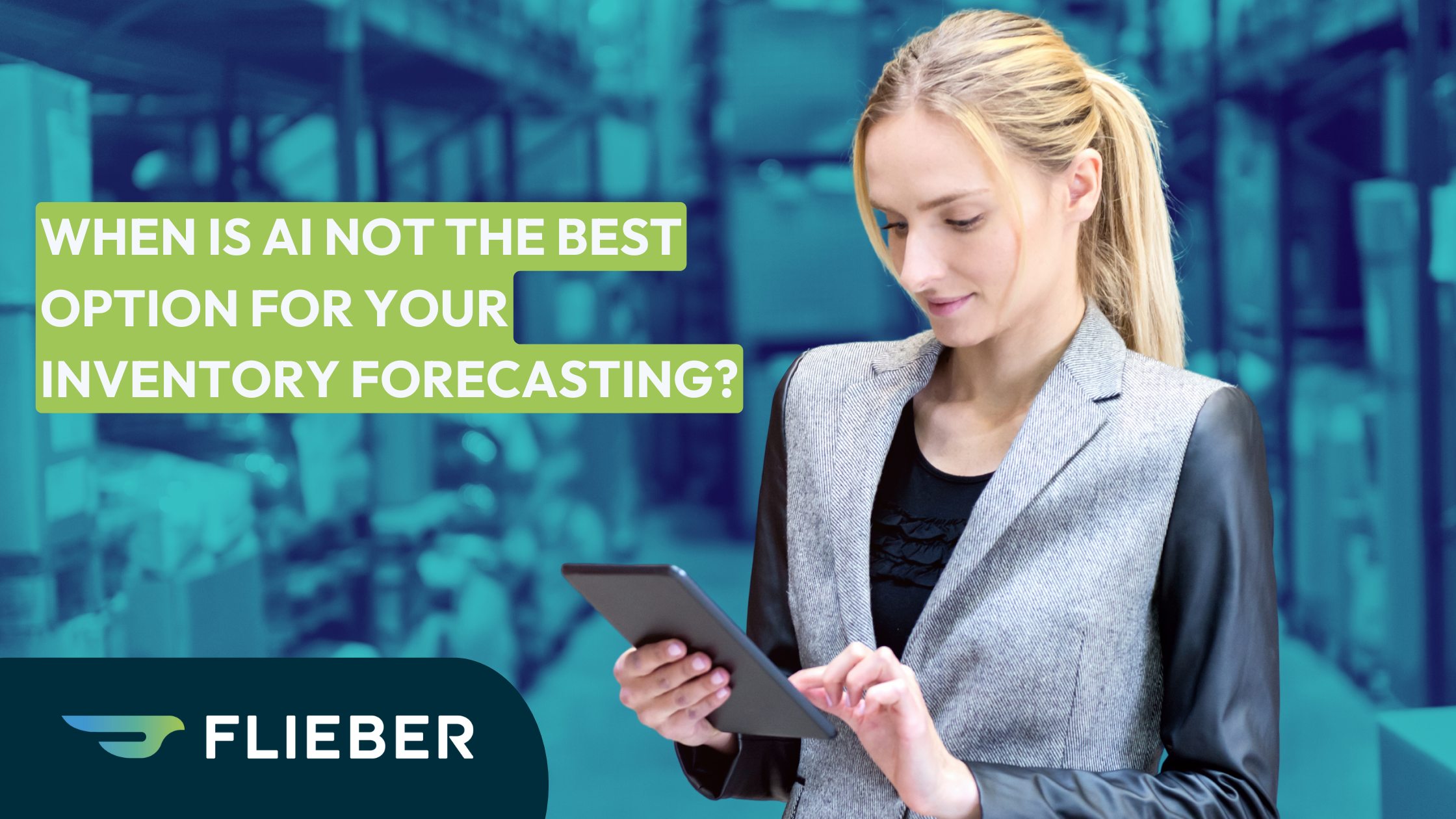In a recent Anvyl survey, 73% of businesses said they were planning to scale into a new channel over the next 6-12 months. 71% were also looking to add more suppliers to their portfolio.
The problem? Many of these brands are already struggling to manage their supply chains, with 67% still using Excel to plan their inventory and 66% reporting existing overstocks.
“Folks are still facing a lot of difficulties when it comes to managing the first mile of their supply chain,” says Carissa Davis, Senior Customer Success Manager at Anvyl.
To optimize retail operations while keeping costs low and customer satisfaction high, brands need an inventory infrastructure that grows with them as they scale. For most, that means finding the right 3PL partner who can support their expansion into new product lines, channels, or global markets.
Not every 3PL is equipped to handle the complexity of a high-growth, multichannel brand. If you’re looking for a 3PL partner that can help you take your e-commerce business to a whole new level, you need to know exactly what to look for and which questions to ask.
Questions to ask a 3PL
- Questions about omnichannel capabilities
- Understanding a 3PL's experience
- Gauging ability to meet future demands
- Revealing the true costs of a partnership
What is a 3PL? And why work with one
A 3PL, or third-party logistics company, handles warehousing, order management, fulfillment services, and other aspects of logistics and supply chain operations as an outsourced service to other companies.
In e-commerce fulfillment, a 3PL might be responsible for:
- Receiving your inventory from suppliers, organizing and storing it
- Picking and packing the items in each order
- Working with carrier partners, freight forwarders, or its own transportation team to ship products to customers
- Tracking deliveries
- Reverse logistics, including managing your pickups and returns process
3PL services may also include other logistics processes, like shipping freight and fulfilling orders overseas, while handling customs brokerage and trade compliance for you, as you expand into new global markets.
For brands that don’t want to invest resources into expensive storage and warehousing, working with a 3PL offers an ideal solution.
Here are just some of the benefits of working with a 3PL partner:
- Done-for-you shipping services
- No long-term capital investments
- Pay on a transactional basis, only for the services you're utilizing
- Streamlined logistics operations without having to manage your own warehouse
From labor management to maintenance, liability insurance, and more, warehouse management is a high-cost endeavor. Outsourcing your fulfillment process to a strong 3PL partner removes that risk with flexible, transactional pricing that adapts to your logistics needs.
“The 3PL model has so many benefits over owning and operating,” says Casey Isaac, Senior Director of Strategic Sales and Partnerships at Flowspace. “You can convert what was historically a fixed cost to a variable one, and focus on what you're good at, which is growing your brand.”
With a reliable 3PL taking care of your order processing and fulfillment, you’re free to focus on improving the customer experience and taking strategic action to expand your online store.
What are some of the top 3PL companies today?
If you run a Google search for a list of the ‘top 3PL companies’ today, you'll see a host of big names like XPO, DHL, FedEx, and UPS. But growing brands and DTCs have different needs, and your best bet may be a more flexible, VC-backed fulfillment company.
Some of the top fulfillment companies that serve e-commerce and growing DTCs include:
- ShipBob
- Red Stag Fulfillment
- Flowspace
- ShipHero
- Omni Logistics
- Fulfyld
- Radial
- Whitebox
- Floship
- ShipNetwork
- ShipFusion
- ShipMonk
Ultimately, the right choice for you depends on your unique supply chain management needs.
The only real way to find out if a potential partner is a good match, is to make sure you’re asking the right questions.
If you operate a brand selling more than $1M on Amazon and/or Shopify, Flieber Sales is for you. Take advantage of the same technology used by top brands, agencies, and aggregators. Get started for free today.
Choosing the best 3PL for your business: 66 questions to ask
A great 3PL can help reinforce your existing fulfillment strategy, increase your revenue capacity, and sharpen your business operations to give you a tangible advantage in the market.
But with a growing number of partners to choose from, the 3PL selection process can be complicated.
Here are four key categories — and 66 important questions — to ask before you sign on the dotted line.
Assessing a 3PL's omnichannel capabilities
One of the most important considerations to make is how well your 3PL can help you navigate new channels, like adding a Shopify site after launching on Amazon or expanding to an overseas market, while keeping shipping costs under control.
Here are the key areas to consider:
| Key Area | Questions |
| Flexibility |
Does the 3PL offer a variety of shipping options (same-day, next-day, two-day, and slower, more affordable options)? |
| Location |
Do they have a national (or international) footprint, with multiple sites in your key operational areas? |
| DTC-Readiness |
Do they have experience picking and packing small orders and individual units? |
| Integration Capabilities |
Does their software have an open API allowing you to integrate easily with DTC channels and e-commerce platforms like Shopify, Magento, and others? |
| Tech Capabilities |
Do they have the infrastructure to automate order fulfillment at speed and scale across multiple channels? |
| Interoperability |
Can they connect with your supply chain partners? |
| Visibility |
Can they provide end-to-end inventory data throughout your entire supply chain network? |
| Usability |
If you or your employees will be interacting with the 3PL’s technology, is it easy and intuitive to make changes and run reports? |
| Dedicated Support |
Is the 3PL easy to work with? |
These capabilities will become more important as you expand. Make sure you get all your questions answered to ensure that you’ve found a trusted partner you can grow with.
Understanding a 3PL's experience
Any 3PL can make big claims, but only the best of them can survive a thorough credibility assessment.
Before signing on with a 3PL, determine whether they’re as good as they say they are by checking their certifications and executing a test run before you commit.
Here are the questions to ask:
| Key Area | Questions |
| Track Record |
Do they have a solid history of good delivery times with low error and lateness rates? |
| Reputation |
Do they have a strong reputation and good reviews? |
| Specialization |
Do they have experience in your individual niche or category? Can they adjust to stricter tracking requirements for certain categories, like food and other perishables? |
| Agility |
Do they know how to adjust to meet up-to-the-minute operational needs, like handling backorders, combining orders, reallocating inventory, and more? |
| Security Consciousness |
What security certifications do they have in place? Have they proven that they’re reliable and trustworthy? |
| Risk Management |
Do they have experience handling supply chain crises and other emergencies? Do they have a robust disaster recovery plan to help you stay operational if an issue arises? |
| Backup Plans | In the case of less critical contingencies — say, an individual shipping partner fails, or is held up due to a labor strike or weather event — do they have procedures in place to seamlessly switch providers? |
| Relationships |
Do they have strong, long-standing relationships with carriers and other service providers? |
| Staying Power |
Are their finances in healthy standing? Do they have a healthy roster of successful, long-term customers? Can you trust that they’ll still be around in a few years’ time? |
Gauging their ability to meet future demands
To find a 3PL who can meet your business needs today and tomorrow, you need a clear picture of your long-term performance goals.
Ask yourself where you see your e-commerce business in the next one, three, and five years, and whether you want to go cross-border, or plan any new major product launches. Then, think about what you’ll need in a 3PL in order to accomplish those goals.
Here are the core questions to ask:
| Key Area | Questions |
| Scalability |
When it comes to warehouse space, how much more volume can this 3PL accommodate? How long will it be able to keep growing with you as you continue to add new channels? |
| Presence |
Do they have facilities in locations where you want to expand? Can they tackle red tape in new states or countries as you go interstate or international? |
| Cost Effectiveness |
Will you be eligible for special shipping rates or discounted warehousing fees over time? |
| Speed |
Will they continue to evolve and increase their pace as you scale? Can they continue meeting your customers’ expectations for fast, on-time delivery? |
| Sustainability |
Will their packaging and carbon footprint match your customers’ values? Can you use this as a selling point to help drive further growth? |
| Efficiency |
As you grow, will they continue to ensure the right SKUs are always in the optimal location to reach customers’ quickly? Will they be able to give you real-time visibility and insight into your inventory data? |
| Automation | How will your 3PL’s software help you streamline workflows so that you’re not manually entering or splitting orders? |
| Adjustability |
Does the 3PL let you quickly and easily modify your strategies around seasonal changes, marketing events, and sudden or unexpected anomalies that could impact order volumes? Do their technical and physical capabilities allow for these adjustments? |
| Customizability |
Does the 3PL let you orchestrate more minute modifications, like making real-time adjustments to order-routing? |
| Legality |
Are they up to speed with compliance and regulations? Do they have processes in place to keep you compliant as you grow? |
The modern world of e-commerce logistics changes fast. In addition to projecting for modest, incremental scaling, consider how your 3PL will cope if you experience sudden unexpected growth.
Revealing the true costs of a 3PL
When assessing a 3PL, consider your current costs, what it would take to expand by building internally, and how much the right third-party logistics provider could save you.
“You need to think about how you can best expand your fulfillment network while keeping costs low and maintaining an optimal customer experience,” explains Olivia Frère, Director of Brand Strategy at Extensiv.
Consider asking the following questions to reveal your true cost savings potential:
| Key Area | Questions |
| Warehousing and Real Estate |
How much could the 3PL save you in warehousing costs compared to where your inventory is sitting now? Is your inventory diversified appropriately across your fulfillment network to help reduce fulfillment costs? |
| Labor Costs |
Where are your 3PL’s facilities located? What are the average worker wages in that location? What actions is the 3PL taking to reduce labor costs in a fair and ethical manner? |
| Initial Investment |
How much will it cost to transition into using this 3PL? What are the account set-up fees, receiving costs, and monthly minimums? What other costs, fees, and premiums are required? Will the reduced overhead costs deliver sufficient ROI over time? |
| Carrier Rates | Is the 3PL able to negotiate better shipping rates to help you save costs on transporting your goods to customers? |
| Transportation |
Do they have their own delivery vehicles or other resources that can make you less vulnerable to supply chain setbacks? |
| Picking and Packing |
What does it cost to have your orders packed? Is there a higher upfront investment due to enhanced technologies, like warehouse automation, that could save you capital on rising labor costs over the long-term? |
| Working Hours |
What are their operational hours? Could periods of unavailability or reduced hours hurt your profits? |
| Tech Stack |
Does the 3PL have a warehouse management system that is compatible with your software and easy to integrate to? |
While 3PL contracts are generally transparent, you’ll want to be 100% sure you’re factoring in every element of your partnership that could impact your total ROI.
This is important because according to experts like Olivia, adding a new 3PL can be costly. “You’ll want to be sure to evaluate every part of your partnership to maximize your ROI, starting first by making sure your new partnership is helping streamline your tech stack and not adding more complexity. Once you’ve found a 3PL who helps you reduce complexity in your workflows, focus on monitoring KPIs and keeping communication lines open,” she explains.
Of course, even with the best 3PL partner, it won’t always be smooth sailing.
“There will most certainly be a few bumps along the way, but if you keep communication lines open, there shouldn’t be any surprises you can’t resolve quickly.”
Top FAQs about e-commerce 3PLs
Can you use a 3PL with Shopify?
Yes! Shopify offers merchants and brands a choice between using its own logistics service — Shopify Fulfillment Network — and filling their own orders. Sellers who choose to go it on their own can fulfill orders in-house or via a 3PL.
Many 3PL providers have plugins that integrate easily with Shopify, as well as with other e-commerce marketplaces and platforms like BigCommerce, Amazon, and Walmart. No matter which platforms you sell on, make sure you choose a 3PL that makes the integration process as simple and seamless as possible.
Is Amazon considered a 3PL?
Yes and no. Fulfillment by Amazon (FBA) and Amazon Multi-Channel Fulfillment (MCF) provide sellers with the same essential logistics services as a 3PL, and MCF offers those services to e-commerce businesses even if they don’t sell through Amazon.
However, unlike other 3PL services, MCF doesn’t give you much (if any) visibility or control into where your inventory is stored, making it impossible to protect against supply chain setbacks with multi-node fulfillment.
Amazon also doesn’t let you customize your packaging. Amazon’s high fees and long lists of inventory restrictions may also make MCF a less flexible solution compared to most other 3PLs. Over time, these costs can impact your overall ROI.
Is 3PL the same as dropshipping?
No. In a 3PL arrangement, sellers have inventory sent in bulk from their suppliers for storage with a 3PL. As orders come in through the seller’s site or marketplace listing, the 3PL is responsible for getting those orders from the warehouse to the customer.
In dropshipping, sellers don’t hold inventory at all, whether in-house or through a 3PL. Instead, inventory stays with the manufacturer or supplier until it's time to fulfill each customer order. A dropshipper forwards customer orders to these suppliers, who are responsible for picking, packing, and shipping orders to the customer.
There are some ways that dropshippers can integrate with and scale using 3PLs, but dropshipping and 3PLs still aren’t the same thing.
Elevate your inventory management with a strong 3PL partner
Expanding your business shouldn’t mean giving control to someone else. No matter which 3PL you choose, the most important question you can ask now is how much visibility you’ll have into your inventory.
The right inventory platform can make all the difference. But how will you know what to order?
With Flieber Sales, you can analyze your inventory data with real-time sales insights to help you maintain healthy inventory levels across your fulfillment network, including your must trusted 3PL partners.
If you operate a brand selling more than $1 million on Amazon and/or Shopify, improve your sales forecasting on Flieber for free today.





